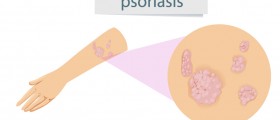
Baker’s cyst or popliteal cyst is condition in which there is a build-up of fluid behind the knee, which causes pain and prevents normal movement, especially walking.
About Baker’s cyst
Baker’s cyst is a cyst filled with synovial fluid, located behind the knee. It causes tension and pain, especially when the knee is flexed or straightened, like during walking. This impairs the ability to move normally. This type of cyst is benign, but it still requires medical treatment mostly because it disturbs the appearance of the whole leg and interferes with normal everyday activities.
A Baker’s cyst in most cases results from a problem related to the knee joint, usually arthritis or a torn cartilage. Both these conditions cause increased production of fluid, which gets accumulated and causes swelling.
Treatment for Baker’s cyst
The single best way to permanently solve the problem with Baker’s cyst is to treat the underlying issue that is causing it. However, these cysts often go away on their own, without any treatment.
Still, if the cyst is large and causes problems like pain and inability to move the leg normally, it is recommended to see a doctor, who will, most likely, recommend physical therapy and/or fluid drainage.
A doctor who specialized in physical therapy will recommend light stretches and motion range exercises, along with the application of ice packs and the use of crutches while walking, in order to reduce the swelling.
As for the fluid drainage, performed to reduce the swelling and the pressure, it is done through needle aspiration with the help of ultrasound imaging.
Doctors may also prescribe analgesics for the pain and sometimes they inject corticosteroids directly into the knee, to reduce the inflammation. Corticosteroids can reduce the inflammation but they cannot prevent the cyst from growing back again. Other methods that can relieve the symptoms include resting, elevating the knee, applying cold compresses and knee sleeves or compression braces.
In any case, these treatment methods will only deal with the current flare-up and the cyst that is already there. Even if the cyst does decrease, it can easily come back again because the underlying cause is not treated.
As it is mentioned above, both arthritis and cartilage tear can cause Baker’s cyst. It is therefore highly recommended to find out the cause and to treat it as soon as possible. However, in some cases, for example if osteoarthritis is diagnosed, the cyst may persevere even after the underlying cause is treated.
If the torn cartilage is causing the Baker’s cyst, a surgical procedure may be required to repair the tear.




-Symptoms,-Diagnosis,-Treatment_f_280x120.jpg)












Your thoughts on this
Loading...